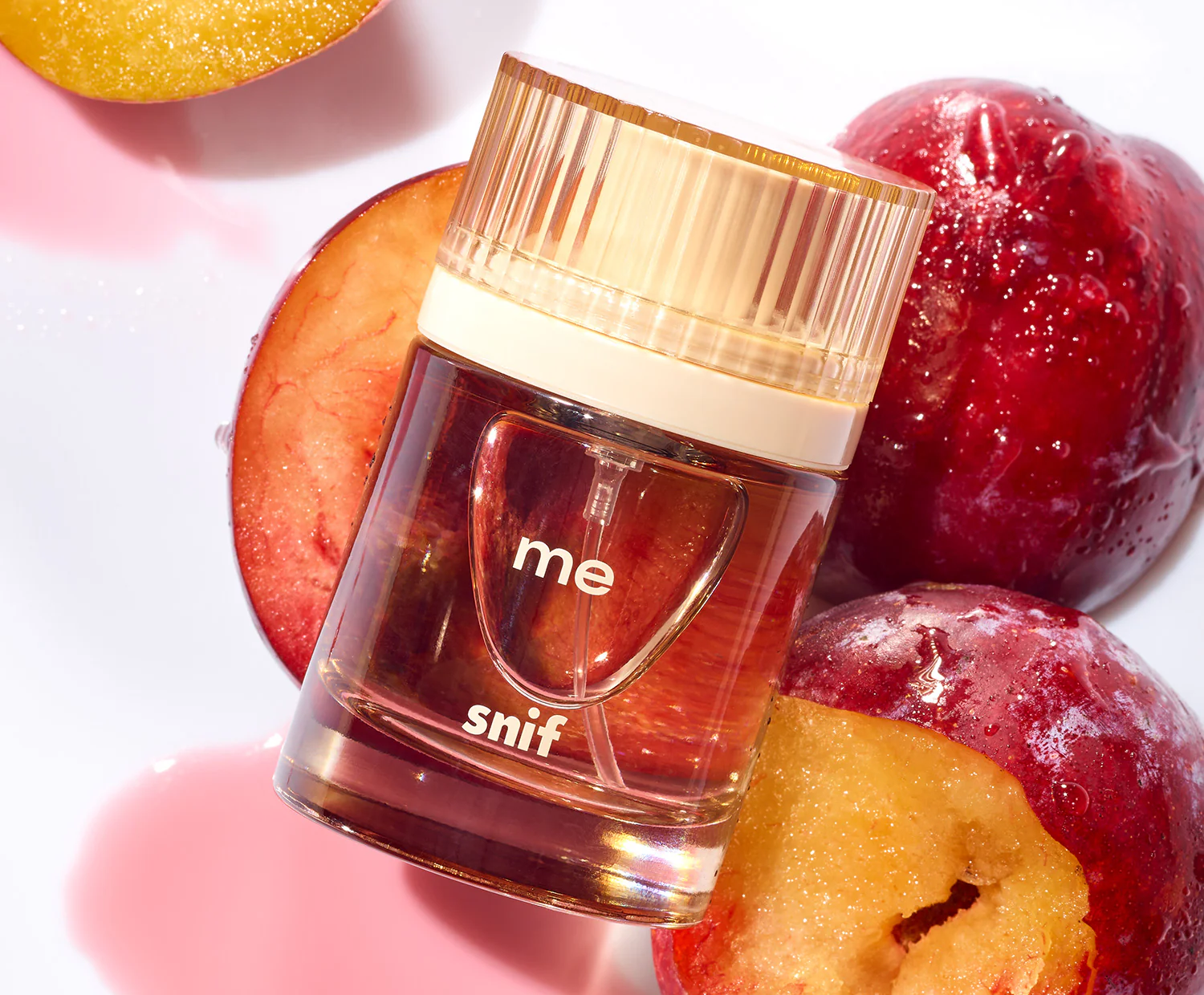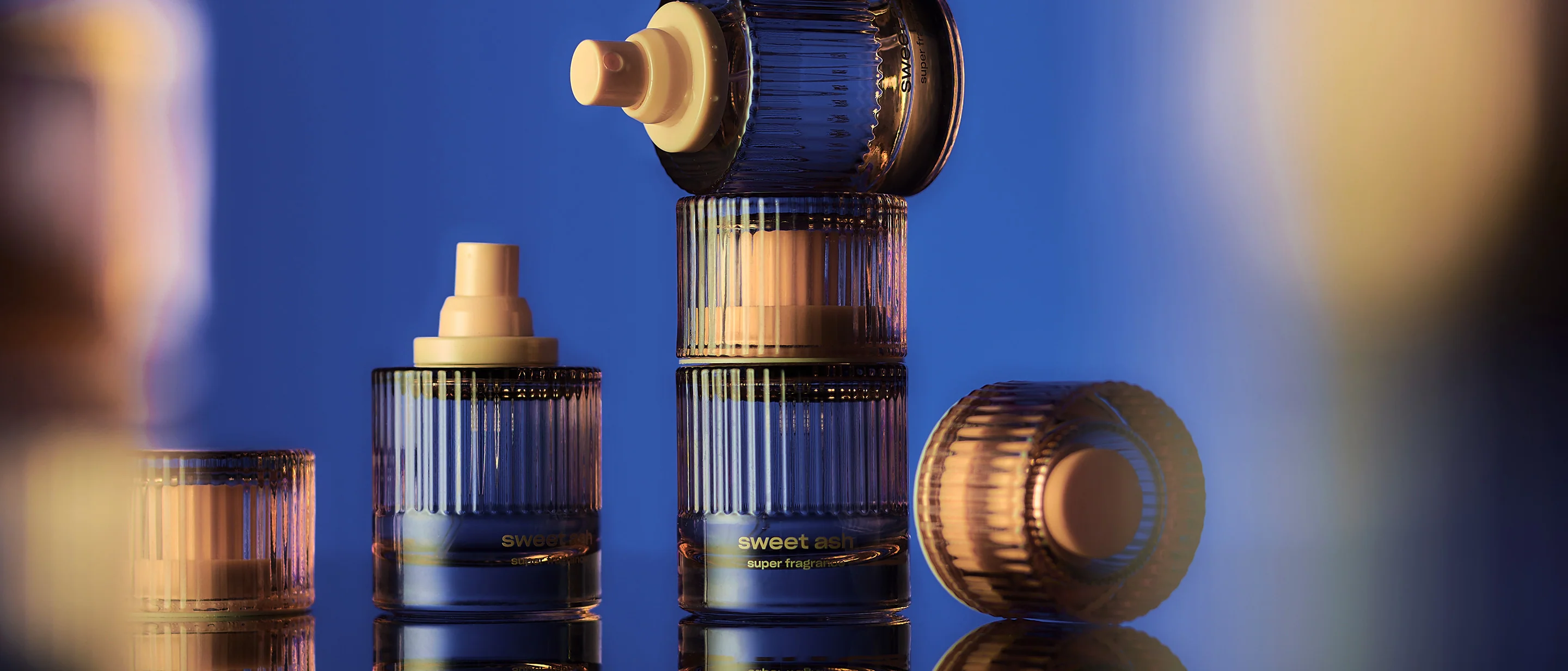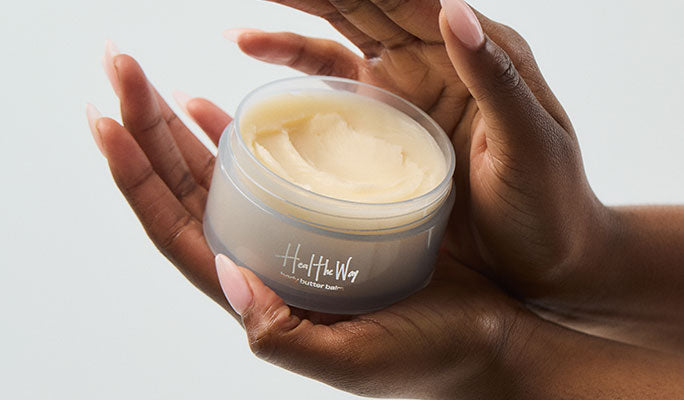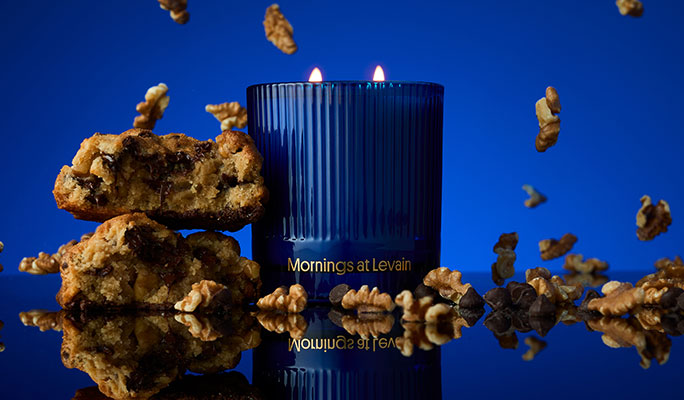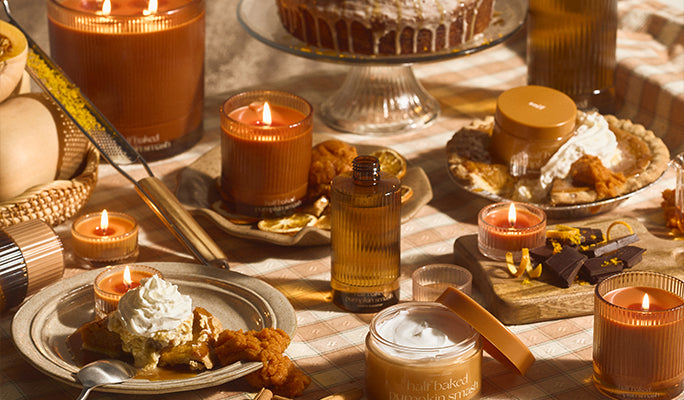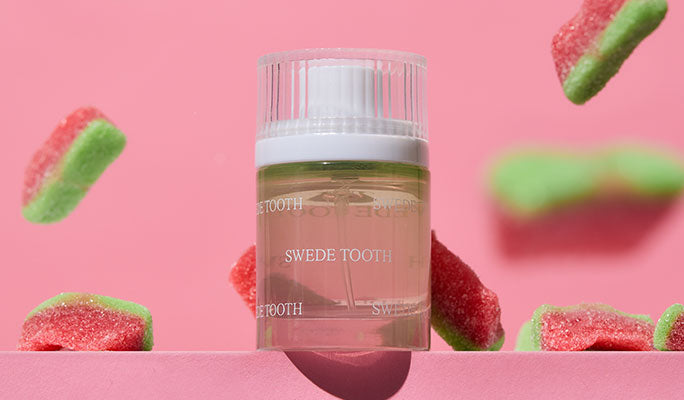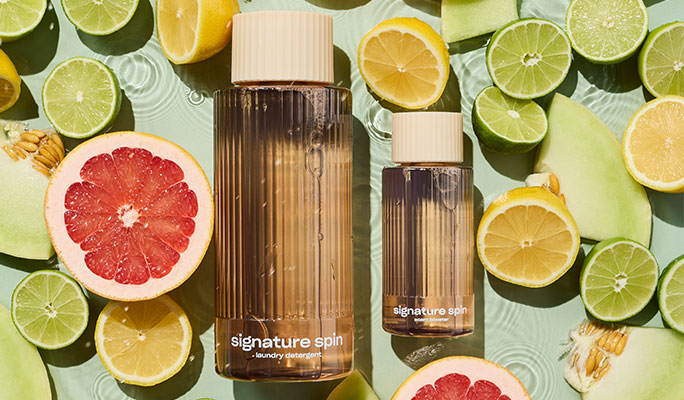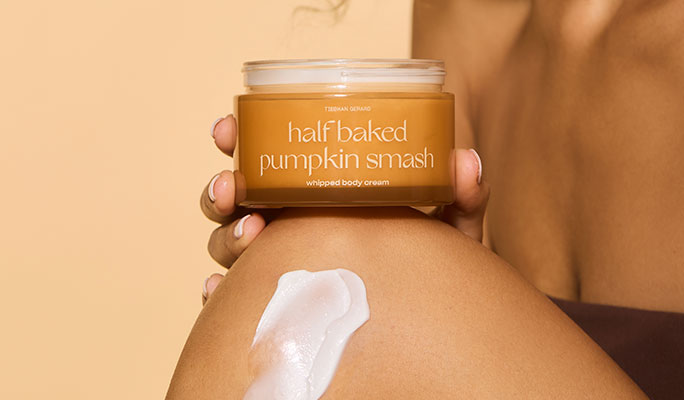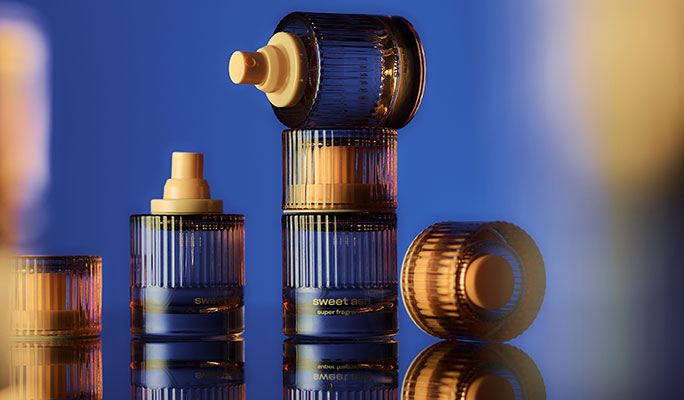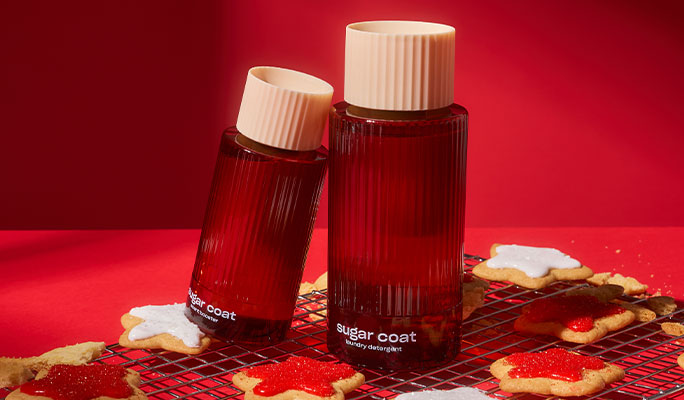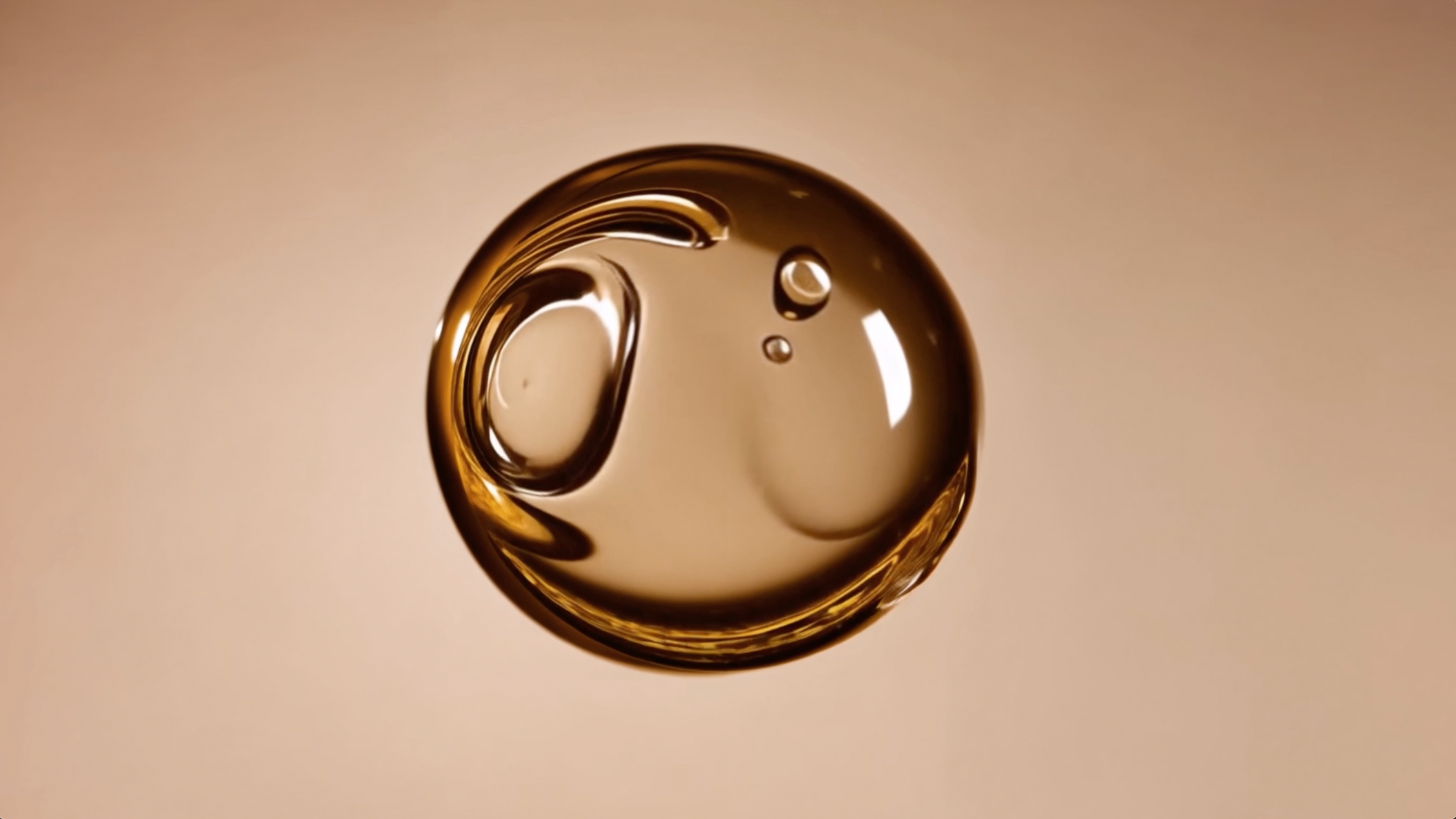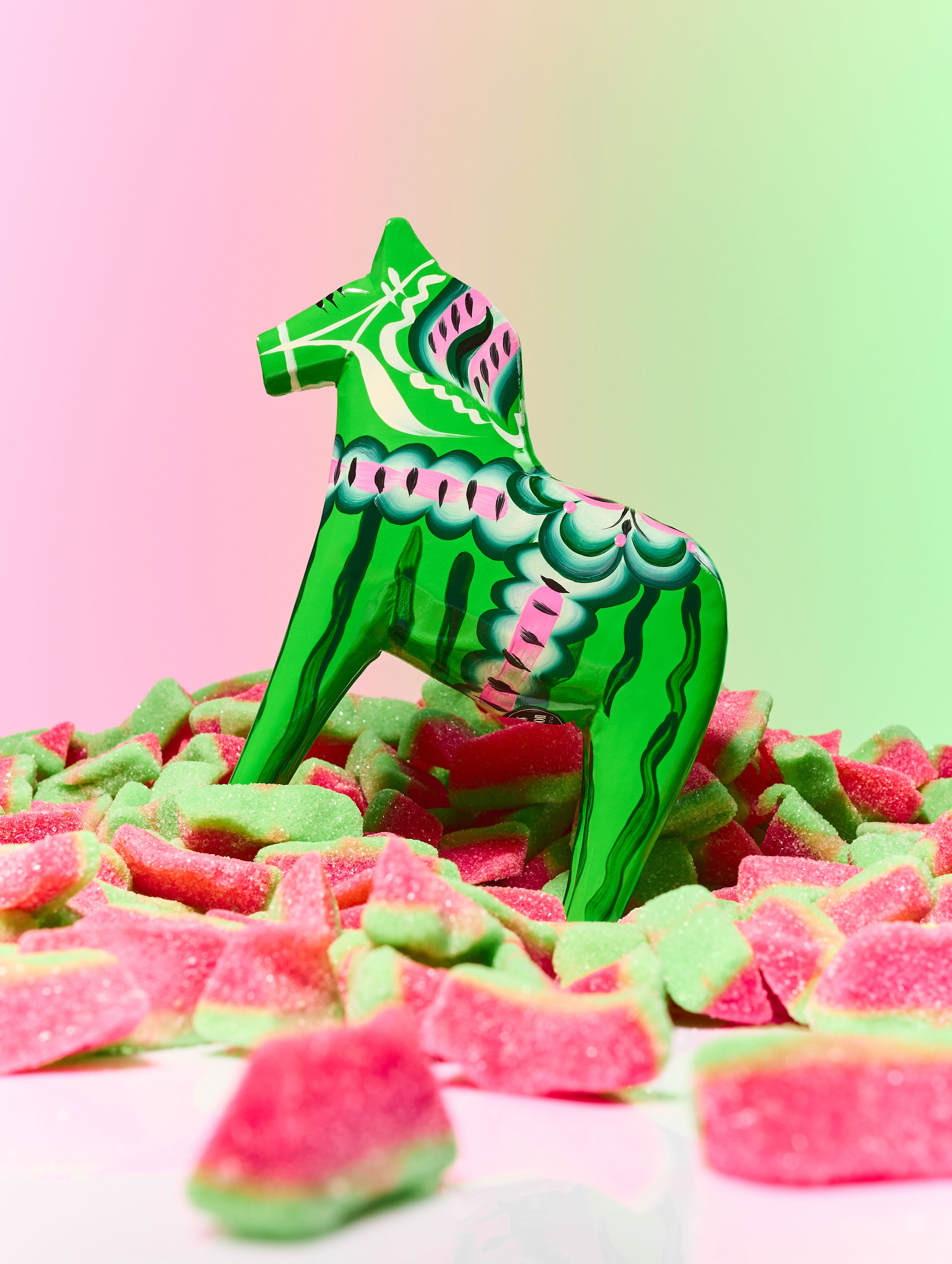Amber is a classic in the fragrance industry, and for good reason. But what exactly is amber, and why should you reach for it if you’re on the hunt for a new signature scent?
Today, we’re breaking down exactly what amber is, how it smells, and why you may want to consider adding it to your fragrance arsenal.
What Is Amber?
Before we dive into what amber smells like, let’s decode what, exactly, amber is.
Amber is fossilized tree resin — but you may be more familiar with amber in the form of brownish-red gemstones. When resin gradually seeps out of tree bark, it hardens over time, and this is what eventually forms the beautiful stones we know and love. That resin is the source of the scent we know as amber.
The scent of fossilized resin varies depending on the tree, but it can usually be considered spicy, sweet, and rich.
Originally, amber was burned in ancient China during celebratory festivities, and it created a woody, musky scent. Today, amber fragrances are typically made by combining several scents for the perfect fragrance experience. Although there’s no concrete, definitive combination of scents to create amber, it often contains a mixture of vanilla, benzoin, and labdanum.
The first ingredient in amber, vanilla, is a time-tested, fan-favorite, delicious scent. Known for its sweet and rich elements, vanilla can be used on its own or mixed with other fragrances for a more complex smell. You may know and love the smell of vanilla from your grandma’s chocolate chip cookies, or it might bring you back to lattes at your favorite coffee shop.
Aside from vanilla, the other scents that are used to make amber are a bit more unusual. Benzoin comes from the styrax tree, and it’s similar to vanilla, but leans spicier. Because of its roots, it is sometimes listed in the ingredients list as styrax benzoin.
Labdanum is a heavier scent that comes from a sticky brown resin. It smells like a combination of pine and leather with a slightly smoky edge, working to balance out the sweetness of vanilla and the spicy element of benzoin.
Other ingredients that are sometimes used to make amber are patchouli, powder, ambroxan, Tonka, and balsam, but the exact combination used can vary from fragrance to fragrance. Think of it like a cake recipe — your mom’s recipe is probably a bit different from your cousin’s, your best friend’s, and your best friend’s mom’s.
What Does Amber Smell Like?
Now that you know what scents are combined to make amber, you might be wondering what they actually smell like all together. Amber is a warm, deep scent as opposed to a lighter scent (like a floral or citrus fragrance). It often smells slightly musky and spicy, but it’s not overpowering, and it won’t make you sneeze.
Amber is also a super-powered scent to mix with other fragrances, even if it is a mixture of scents in and of itself. You can combine amber with floral, fruity, and citrusy scents, for example, to bring them into a sweeter, richer space.
You might even find that certain amber scents are a bit smokier or more powdery than others, which can be helpful for adding an extra layer of depth to light, bright fragrances.
Does Amber Smell Like Pine?
Amber is often compared to pine, which is an accurate description in some ways — but it needs a little bit of explaining.
Keep in mind that amber comes from fossilized tree resin, and usually, that resin comes from pine trees. For this reason, amber has a slightly piney fragrance when it’s heated. That said, the smell of amber is richer and sweeter than the smell of pine.
Plus, given that it can also have slightly spicy and rich notes, amber is a more complex smell on the whole.
Why Wear Amber Scents?
There are several amazing reasons to wear amber scents — the most important being that you like how it smells. Still, there are a couple of go-to compliments for this fragrance that might help you fall in love.
Amber Is Ideal for Fall and Winter
Given that amber is a warm and sweet scent, it’s a pretty much perfect match for fall and winter when you want all the comforting vibes.
When the weather starts to get colder and you’re craving something cozy, amber may be the idea scent to reach for — it’s like your softest blanket and comfiest couch in a bottle.
Amber Is Warm and Relaxing
Another reason to consider making amber your signature scent is that it’s full of relaxing goodness. Some scents are bright and energizing, and others are bold and charismatic. Amber, though, is soothing, putting in the work to help you wind down and relax after a long day.
Amber Is Timeless
Amber has been a beloved scent since ancient times. It’s a timeless, classic fragrance that never goes out of style (clearly).
Plus, like all scents, amber is a genderless fragrance that can be enjoyed by anyone and everyone who reaches for it.
What Are the Best Amber Scents To Try?
Convinced that you need to try an amber scent, but not sure where to start? We have a few suggestions for the best amber scents and candles to try out.
Way With Woods
Way With Woods combines warm amber with white tea, mandarin, sandalwood, vetiver, and musk. It’s a slightly woodsy and inviting scent without being too strong, making it perfect for day or night.
Ditch Plains
If you’re looking for a slightly citrusy scent that still has that amber vibe you’re looking for, Ditch Plains may be your new favorite candle. It combines neroli with tuberose, orris, run, sandalwood, cedarwood, tobacco, and amber for an oceanside oasis, right at home.
Off the Grid
Another relaxing candle that uses amber is Off The Grid. Along with amber, you’ll find lily of the valley, moss, cypress, tuberose, cedar, and sandalwood in this candle — the perfect combo for quiet Sundays, lazy mornings, and calm evenings.
Prenup
Our final amber scent suggestion is our Prenup candle. This candle blends black amber with vetiver, ebony wood, musk, vanilla, and tonka bean, creating a warm, sweet, and woody experience. It’s a smooth-talker that carries you seamlessly through “happily ever after” and beyond.
Find the Scent for You
It can be tough to find your signature scent, but it doesn’t have to be. We believe the best way to choose the right fragrance or candle is to try it before you buy, whether you’re reaching for an amber fragrance or otherwise.
With our fragrance trial kit, you’ll receive three full-size scents or candles along with three sample sizes. You’ll have seven days to try out the fragrances or candles before you decide which you want to keep. If you want to keep them all, we don’t blame you — but you can return any or all of the products for free, too.
Sources:
Benzoin, a resin produced by Styrax trees in North Sumatra Province, Indonesia | CIFOR

